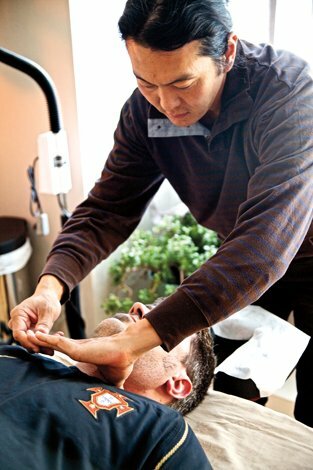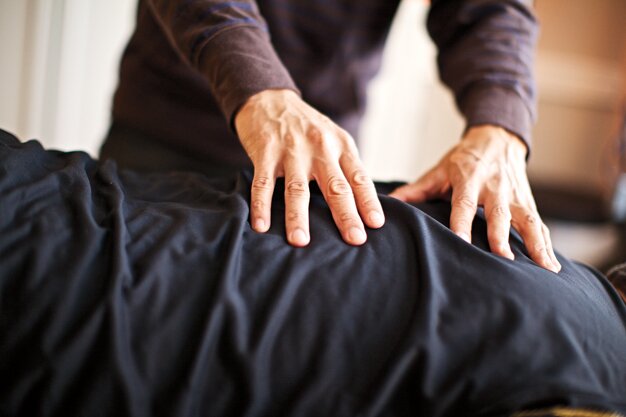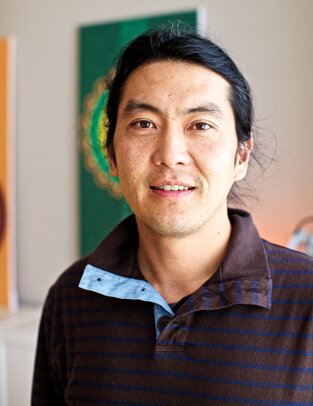Bowen Therapy
Rolling away the pain

Bowen practitioner Craig Sakimoto works on a patient at the Zen Integrative Clinic in San Jose.
Photograph by Rachael Olmstead
Bowen therapy, a healing technique developed in the 1950s and 1960s by Australian Tom Bowen, is said to relieve conditions such as migraine headaches and lower back pain after only a few sessions. Reported to be a safe treatment for everyone from trained athletes to the elderly, Bowen’s popularity is growing in the United States.
Bowen therapy is based on the belief that the soft tissue, or fascia, is the cause of many health problems, including chronic pain. Bowen practitioners use their thumbs or forefingers to make gentle, rolling movements across tendons, ligaments, and connective tissue. Patients can wear clothing during the treatment. During a typical session, the therapist leaves the room for two-minute pauses, which allow the patient’s body to respond to the treatment. Through its gentle manipulation of soft tissue, Bowen therapy stimulates the body to return to balance, allowing it to heal.
“Bowen is different from Rolfing or chiropractic,” says Craig Sakimoto, a certified Bowen Therapy Practitioner at San Jose’s Zen Integrative Clinic. “Bowen gets the body in a state of balance, energetically, so it can heal itself.”
“An injury, such as whiplash sustained from a car accident, stays in the body,” Sakimoto says. “In other words, the memory of that injury causes a person to compensate for the pain, even when the pain is gone. This leads to imbalances… You don’t remember what normal is.”
Sean Wolf, of The Body Restoration Clinic in Santa Clara, says that using Bowen therapy on his clients has kept some of them out of the surgery clinic. “Bowen is especially effective for problems with the knee, hip, and neck,” he says. Wolf was initially skeptical about the method, but now he treats dozens of clients with Bowen therapy and says that 80 percent of them benefit from it.
“I realized that Bowen was just as powerful, if not more so, than other techniques such as massage and acupuncture. It’s also easier to administer.”
A study at the University of North Carolina found that patients rated the Bowen technique as 75 to 85 percent effective for treating back pain, hip pain, stress, and other conditions.
A typical course of treatment requires between four and six weekly visits, lasting about 60 minutes each.
“In the first session,” Sakimoto says, “we use techniques that prepare the body. This is when we assess the client’s issues with pain. The series of movements stimulates the body’s own healing mechanisms.” Old injuries resurface through treatment and are corrected. Subsequent treatments may or may not be needed, depending on the extent of a client’s problems.
Creator Tom Bowen refined his techniques over the course of 30 years of treating sports and work-related injuries. He had no formal medical training and did not document his techniques, but he passed them on to a few of his students, who were mostly chiropractors and massage therapists. Today, Bowen schools and associations are found throughout the world.
